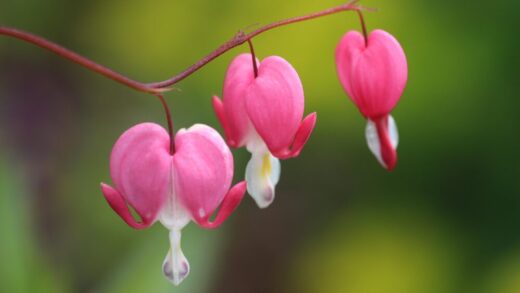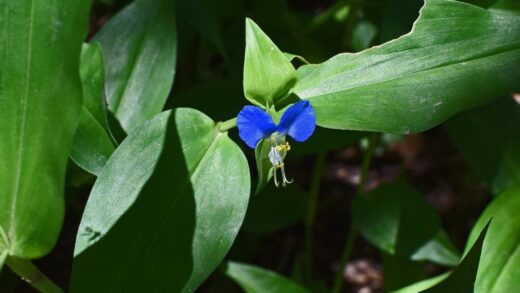Understanding the specific water requirements of the wild tulip is fundamental to its successful cultivation, as its needs change dramatically throughout its annual life cycle. This is not a plant that thrives on a consistent, year-round watering schedule; instead, its irrigation needs are dictated by its periods of active growth and deep dormancy. The key to proper watering is to mimic the natural precipitation patterns of its native woodland and meadow habitats. This means providing ample moisture during the spring when the plant is actively growing and flowering, followed by a crucial period of dryness during the summer months. Mastering this balance is essential for promoting healthy bulb development and preventing the common problem of rot.
The most common mistake made in cultivating wild tulips is overwatering, especially during their summer dormancy. In their natural environment, the soil would dry out significantly after the spring rains cease and the tree canopy above reduces moisture evaporation. This dry period is not something the bulb merely tolerates; it is a required condition for its survival. It prevents the growth of fungal and bacterial pathogens that thrive in warm, wet conditions and can quickly destroy a dormant bulb. Therefore, any irrigation plan must incorporate this necessary period of summer drought to ensure the long-term health of the colony.
The plant itself provides clear visual cues about its changing water needs. The emergence of green shoots in the spring is a signal to ensure the soil is adequately moist. As the foliage is in full, active growth and the flowers are developing, the plant’s water uptake is at its peak. Conversely, the yellowing and wilting of the leaves after flowering is a clear indication that the plant is entering dormancy and that water should be gradually withheld. Learning to read and respond to these natural signals is far more effective than adhering to a rigid watering schedule.
Ultimately, the goal of your irrigation practices should be to create a soil environment that supports the tulip’s natural rhythm. This involves more than just applying water; it also relates to the soil’s ability to retain and release that moisture appropriately. A well-prepared bed with plenty of organic matter will hold moisture during the spring growth phase but will also drain freely, allowing it to dry out as summer approaches. Thoughtful irrigation, combined with excellent soil structure, forms the cornerstone of care for this beautiful and resilient wildflower.
The natural water cycle of the wild tulip
To truly master the irrigation of the wild tulip, one must first appreciate its relationship with water in its native setting. The life cycle of this plant is perfectly synchronized with the seasonal availability of moisture in European woodlands and meadows. Its journey begins in the autumn, when cooler temperatures and increased rainfall trigger the development of roots from the dormant bulb. This initial moisture is crucial for establishing the root system that will support the plant through its entire growth cycle. The soil remains cool and damp throughout the winter, protecting the bulb and its newly formed roots.
More articles on this topic
The period of most significant water demand occurs in the spring. As the ground thaws and temperatures rise, the tulip begins its rapid phase of growth, sending up leaves and flower stems. This burst of activity is fueled by the abundant moisture from melting snow and frequent spring showers. The woodland soil is at its most water-retentive during this time, acting like a sponge that provides a constant supply of water to the thirsty roots. This consistent moisture is essential for proper foliage development and for supporting the delicate, nodding flowers that are the plant’s crowning glory.
Following the spring flowering, a critical shift occurs in the plant’s environment and its relationship with water. As the deciduous canopy above leafs out and summer approaches, less rain reaches the woodland floor, and the soil begins to dry out. This coincides precisely with the tulip’s entry into dormancy. As the foliage withers, the bulb’s metabolic activity slows dramatically, and its need for water ceases almost completely. This summer drought is a vital part of the cycle, curing the bulb and protecting it from fungal diseases that would flourish in warm, damp soil.
The cycle completes as autumn returns, bringing cooler air and more reliable rainfall, which once again moistens the soil and signals to the dormant bulb that it is time to begin growing roots anew. This intricate dance between the plant’s life cycle and the seasonal availability of water has been refined over thousands of years. By understanding this natural wet-spring and dry-summer rhythm, gardeners can move beyond simply watering their plants and instead provide an environment that truly nurtures them according to their innate needs.
Irrigation during the growing season
The primary period for providing supplemental water to wild tulips is during their active growth phase in the spring. From the moment the first green shoots push through the soil until the flowers begin to fade, the plants have a consistent need for moisture to fuel their rapid development. In many climates, natural spring rainfall will be sufficient to meet these needs. However, if you experience an unusually dry spring, it is crucial to intervene and provide supplemental irrigation to prevent the plants from becoming stressed, which can result in stunted growth and smaller, less vibrant flowers.
More articles on this topic
When you do need to water, it is best to do so deeply and infrequently rather than providing small, frequent sprinklings. A deep watering encourages the roots to grow further down into the soil, making the plant more resilient and less dependent on surface moisture. Apply water slowly at the base of the plants until the soil is thoroughly soaked to a depth of at least 15-20 centimeters (6-8 inches). This ensures the entire root zone is hydrated. A soaker hose or drip irrigation is an excellent method as it delivers water directly to the soil, minimizing evaporation and keeping the foliage dry, which can help prevent fungal diseases.
The best time of day to water is in the early morning. This allows the water to soak into the soil before the heat of the day increases evaporation rates, ensuring that more of the water reaches the plant’s roots. Watering in the morning also gives the foliage a chance to dry completely during the day, which further reduces the risk of disease. Avoid watering in the evening, as foliage that remains wet overnight can create an ideal environment for the development of fungal pathogens like botrytis blight.
It is important to monitor the soil moisture rather than watering on a fixed schedule. The frequency of watering will depend on your soil type, weather conditions, and rainfall. Sandy soils will dry out much faster than clay-based soils, and a week of sunny, windy weather will deplete soil moisture more quickly than a cool, cloudy period. Before watering, check the soil by inserting your finger a few inches deep. If the soil feels dry at that depth, it is time to provide a thorough soaking.
Watering after flowering
The period immediately following the bloom is a critical transition time for the wild tulip’s water needs. While the flowers may be gone, the leaves are still actively photosynthesizing, working hard to produce the energy that will be stored in the bulb for the next year’s growth. During this phase, which can last for several weeks, the plant still requires a consistent supply of moisture. It is a common mistake to cease watering immediately after the last petal falls, but doing so can starve the bulb of the resources it needs to mature properly, leading to diminished performance in subsequent years.
Continue your spring watering regime as long as the foliage remains green and vigorous. The goal is to keep the soil evenly moist, just as you would when the plant was in bud or bloom. If rainfall is scarce, provide a deep soaking every week or so, allowing the soil to dry slightly between waterings. This continued support ensures the leaves can function at their maximum efficiency, maximizing the amount of energy sent back to the bulb. Think of this period as the final and most important meal for the bulb before it goes to sleep for the summer.
The signal to begin reducing water is the changing color of the foliage. As the leaves start to lose their vibrant green color and begin to turn yellow, it indicates that the process of photosynthesis is winding down and the bulb is preparing for dormancy. This is your cue to gradually taper off supplemental irrigation. You can start by extending the interval between waterings, allowing the soil to dry out more thoroughly each time. This gradual reduction mimics the natural drying of the soil at the onset of summer in the tulip’s native habitat.
Once the foliage has turned completely yellow or brown, you should stop all supplemental watering. At this point, the bulb is fully dormant and requires a period of warmth and dryness. Continued irrigation during the summer months is highly detrimental and is the leading cause of bulb rot and failure. Mark the area where your tulips are planted so you do not inadvertently water them while tending to other summer-blooming plants nearby. Respecting this need for a dry summer rest is the most important aspect of post-flowering water management.
Special considerations for different climates
The specific irrigation needs of wild tulips can vary significantly depending on your regional climate. In regions with a Mediterranean climate, characterized by wet winters and hot, dry summers, the natural precipitation pattern aligns almost perfectly with the needs of the wild tulip. Gardeners in these areas may find that they need to provide very little, if any, supplemental water. The winter rains provide ample moisture for root development and spring growth, while the guaranteed summer drought ensures the bulbs have the necessary dormant period. The primary focus here is simply to ensure the chosen planting site has excellent drainage to handle the wet winters.
In contrast, gardeners in climates with significant summer rainfall, such as the northeastern United States or parts of the UK, face a greater challenge in providing the necessary dry dormancy. While spring moisture is usually reliable, preventing the bulbs from rotting in the damp summer soil requires careful planning. The most effective strategy is to plant wild tulips in locations that dry out quickly, such as on a slope, in a raised bed, or near the base of a thirsty tree that will draw excess moisture from the soil. Amending the soil heavily with grit and sand to maximize drainage is absolutely essential in these regions.
For those gardening in very dry or arid climates, the challenge is reversed. Here, providing sufficient and consistent moisture during the spring growing season is the top priority. Natural rainfall may be inadequate, requiring a disciplined approach to supplemental irrigation from the time shoots emerge until the foliage begins to yellow. Using a thick layer of organic mulch, such as shredded leaves or compost, can help conserve soil moisture by reducing evaporation. In these climates, you have complete control over the summer dormancy, as you can simply turn off the water supply to the area once the foliage dies back.
In temperate climates with variable weather patterns, flexibility and observation are key. A spring might be unusually wet, requiring no extra water, or it could be unseasonably dry, necessitating regular irrigation. Summers could be hot and dry or cool and damp. Gardeners in these regions must be adaptable, monitoring soil conditions closely and responding as needed. The use of well-draining soil and careful site selection remains the best insurance policy, providing a buffer against the unpredictability of the weather and helping to maintain the delicate balance of moisture and dryness that wild tulips require.




















